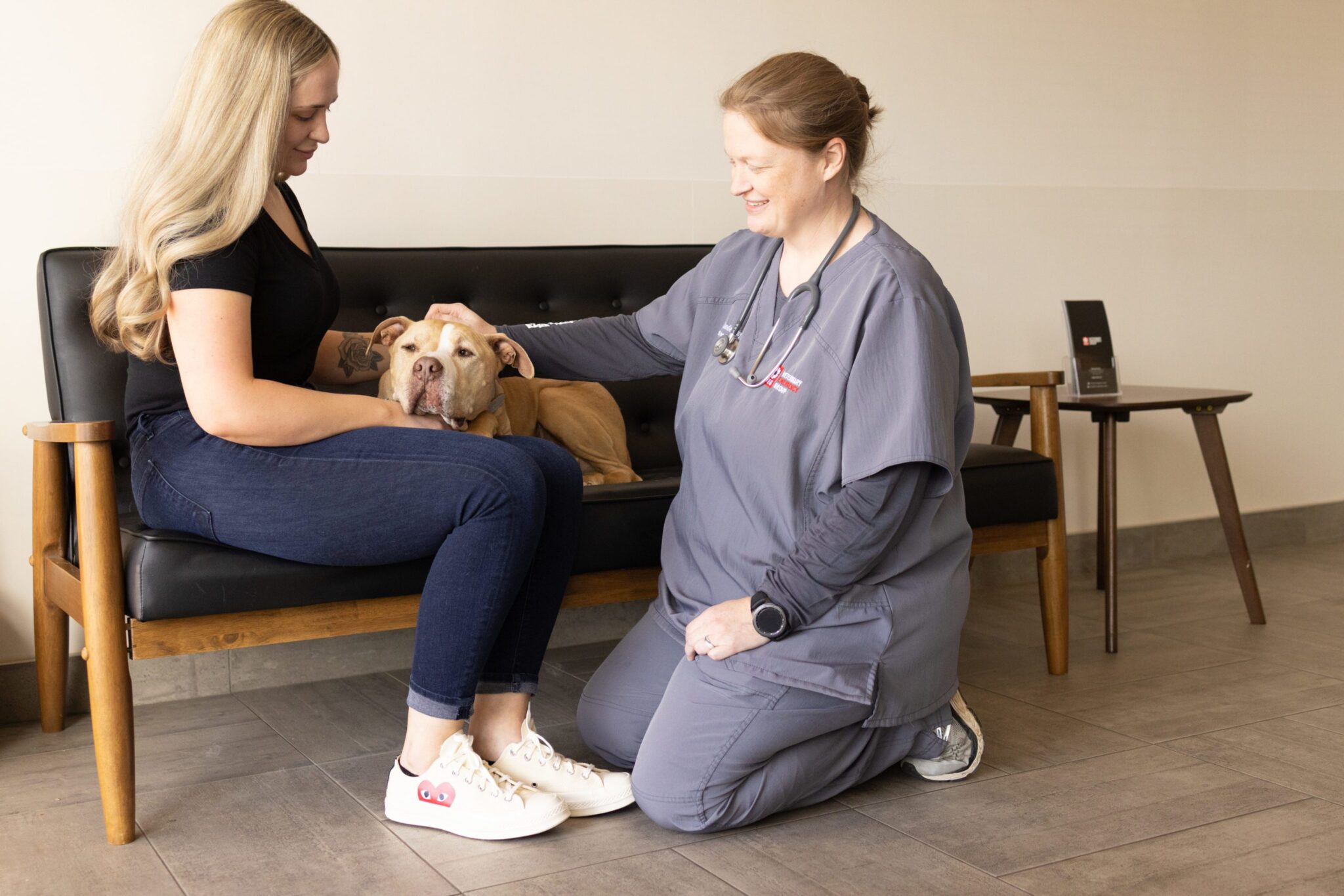
Signs Your Dog Has Anxiety & How to Treat it
Dr. Carolina Fabelo
Call & Speak with a doctor Open 24/7, Even Holidays!
Walk in today for:
Emergencies
Point-of-Care Ultrasound
Urgent Care
X-Rays
Diagnostics + Testing
End-of-Life Care
Surgery
Treatment + Hospitalization
Do you have an anxious dog? Would you know how to recognize anxiety in your dog? How can you help your pet combat the symptoms and issues related to her anxiety?
Anxiety is a common problem for many dogs. As a pet owner, it’s important to learn how to help your dog deal with anxiety so they can feel better and live a content life as well. In the article below, we’ll explore some of the signs of anxiety in dogs and help you get some ideas for treating and managing the issue, too. Read on to find out more.
Signs of Anxiety in Dogs
Listed below are the main signs to look out for:
Whining
Whining can be a symptom of anxiety, especially if it occurs during situations when your dog is already feeling anxious. However, whining may also sometimes indicate pain, so it’s important to differentiate between the two possible causes of this symptom.
Hiding
Hiding is another potential sign of anxiety that may also be linked with pain and/or discomfort. Examples include, hiding when they hear fireworks/ storms, when someone new comes to your home, or other new changes to their environment. Again, keep in mind, this behavior may also be associated with pain.
Bathroom Accidents
Bathroom accidents in otherwise housetrained dogs are some of the most common signs of canine anxiety. If your dog has separation anxiety and is left alone, for example, she may urinate or defecate on the floor due to her anxiety. If these symptoms happen in non-anxiety situations, they may indicate a health problem instead.
Destructive Behavior
Destructive behavior, like potty accidents, are more likely to happen during a triggering event that is causing your dog’s anxiety. Some dogs may become very destructive and chew up furniture or items in the home when left alone as a symptom of separation anxiety, for example.
Pacing
Pacing often indicates anxiety in dogs, although it can also be associated with pain in some cases. Pacing may occur during or shortly after the event that causes your dog to feel anxious. When the event has passed, your dog will likely stop pacing if anxiety is the cause of this symptom.
Clingy Behavior
Dogs with nervous and anxious behavior may become clingy toward their human family members. If your dog is in a situation where they feel unsafe, they may want to sit on or near you all the times because of their anxiety.
Treatment for Anxiety in Dogs
Listed below are the main treatment methods:
Mental Stimulation
Mental stimulation is one of the best ways to help your dog feel less anxious most of the time. You may provide mental stimulation for your dog by giving them puzzle toys, or treat toys to solve, or by playing with them interactively. When your dog is mentally stimulated to solve puzzles and problems, they will redirect their focus on the sources of their anxiety in their everyday life.
Physical Exercise
Like mental stimulation, physical exercise can go a long way toward helping your dog combat anxiety. With adequate physical exercise, they are more likely to be calmer in situations that may cause anxiety, such as less destructive behavior and potty accidents, for example.
Professional Training
Professional training is a great resource where your dog’s anxiety cannot be managed at home. A very anxious dog may become destructive, aggressive, and may develop too much dependency on human family members. You can help your dog behave better and recover from her severe anxiety symptoms by working with a professionally experienced dog trainer, while maintaining a healthy pet-human bond.
Practice
Practicing situations that cause anxiety for your dog can help desensitize them, but it is important to work very slowly. For example, if your dog has separation anxiety, start by leaving them alone for just five or ten minutes and rewarding them with lots of treats when you return.
Medication
Finally, if your dog’s anxiety is severe, causing your pet self-physical harm, and/or if you cannot get it under control with other methods on this list, your vet may recommend medication. Medication is typically a last resort, but your vet can give you more information about this option for your pet.
Contact VEG if Your Dog Has Anxiety
Although it is impossible to completely cure anxiety in your dog, you can help her manage their condition successfully by trying the methods outlined in the article above. Of course, it is always a good idea to talk to your vet for more specific information if you’re dealing with issues relating to your dog’s anxiety, too. With the help of a trusted veterinarian, you can choose the best management solution for your dog’s needs and help them get back to their happy self in no time.
If you do suspect that your dog has anxiety don’t hesitate to call VEG. We have locations all over the country that are open 24/7 and our team is ready to guide you and your pet in the right direction. You can speak directly with an emergency vet who will provide advice on your pet’s condition. Contact VEG today!

